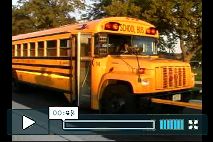The Importance of Safety Training in the Skilled Trades

While every workplace requires safety training for its employees, this is particularly important for those who work in the skilled trades. Every workplace comes with some risks, whether you work in an office or out in the field. But the prevalence of heavy labour, machinery and equipment, and occasionally harsh conditions in many trades jobs means an increased chance of having an accident leading to injury or worse — and therefore a greater need for stringent, in-depth safety training.
Safety training is required for all employees, from workers and contractors to supervisors, and should be supplied by the employer in accordance with requirements under the Occupational Health and Safety Act (OHSA) and Workplace Safety and Insurance Board (WSIB). Some safety training can be taught by a qualified internal person, but other high-risk or more in-depth training can be arranged through external third-party training and certification providers. Types of safety training include both general workplace safety training (e.g., WHMIS, workplace violence and harassment training, or fire safety) and site-specific or project/role-specific hazards training (e.g., forklift safety, scaffolding safety, excavation safety). Safety training will also ensure you know what safety equipment is required for the job, and how to wear it safely and effectively.
Comprehensive safety training in the trades has many important aspects. First, it ensures that you know what risks are inherent in the job, how common they are, and how to avoid or mitigate those risks. Safety training will teach you what to watch for in your work environment, how to perform a task correctly and safely or operate a piece of equipment (e.g., operate a forklift), and most importantly will teach you what NOT to do to stay safe on the job site.
Safety training is intended to prevent unsafe behaviour in the workplace. This includes teaching you how to identify an unsafe action or environment, how to act safely yourself, and how to report an unsafe situation to a superior. You will also have the tools to recognize unsafe behaviour by others. The goal is to reduce accidents and injuries on the job site, and ideally eliminate them.
It is also important to remember that all workers have the right to refuse to do work that they believe to be unsafe. In this situation, you should immediately report your concerns to a supervisor.
Lastly, safety training includes information on how to communicate about workplace safety – whether that is discussing risks and safety requirements with your coworkers, or reporting safety concerns to your supervisor, WSIB, or an OHSA representative.
Remember, regardless of which trade you work in — whether you’re a carpenter, electrician, hairstylist, or another trade — you have the right to a safe workplace and to insist on receiving the correct health and safety training for your role.
Sources
https://www.ihsa.ca/pdfs/products/W001-Training-Requirements-Chart.pdf
https://www.labourly.ca/recruiter-guide-to-skilled-trades-health-and-safety/





Laisser un commentaire!